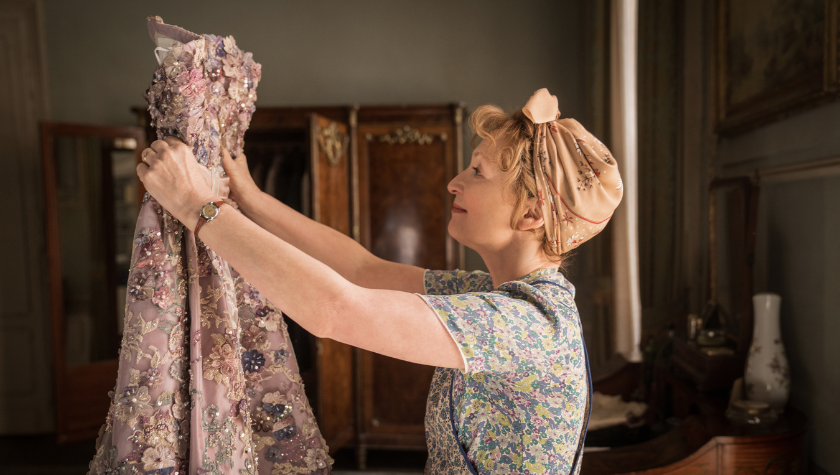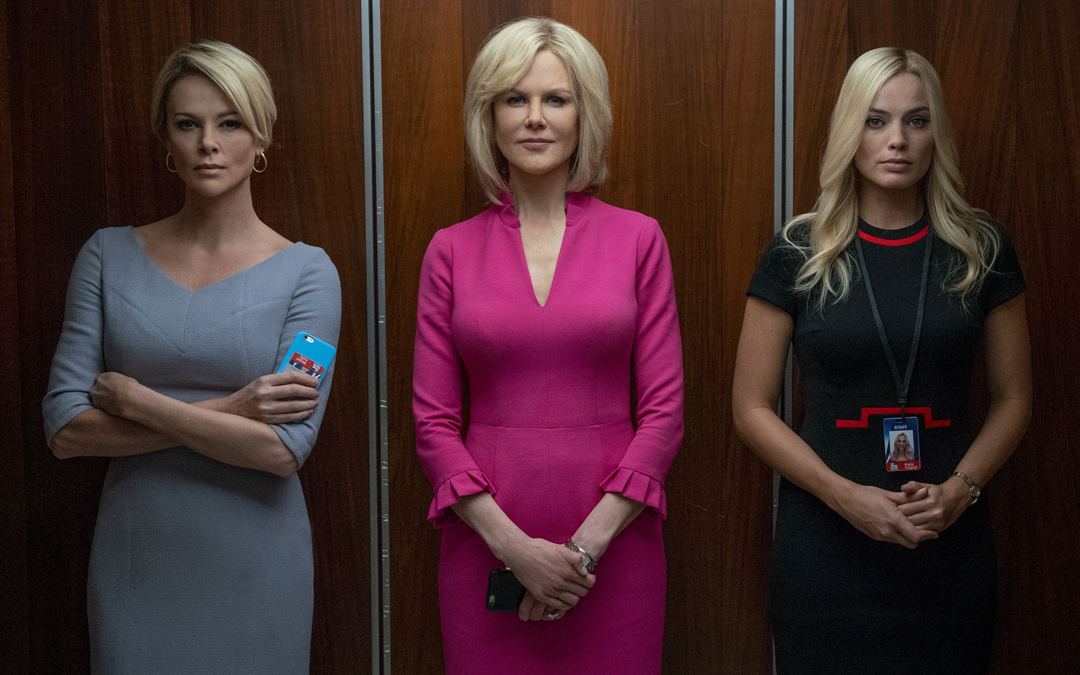‘Bombshell’ Aptly Captures the Nuances, Perils and Pains of Speaking Out
January 23, 2020
Bombshell is a powerful piece of work, but it’s also not an easy watch. There are intentional cringe-worthy moments galore as women on the forefront of the #MeToo movement struggle to find their voices while keeping their jobs. Rare is an achievement in filmmaking that can evoke emotions of disgust and invigoration so equally well.
But this feels right for a movie about harassment in the workplace. To say the repercussions of the #MeToo movement remain raw and on the surface for most women is an understatement. When the present day still has not brought justice to the victims of Harvey Weinstein, Bombshell asks you to keep watching when you want to look away, to empathize with people you may not agree with, and to breathe a sigh of relief when impossible justice is finally served.
The rise and fall of Roger Ailes is now a familiar story. It was hard to miss the headlines as the powerful man’s fall from grace was fodder for tabloid and mainstream news alike. Last year also brought us Russel Crowe’s eerie and unrelenting portrait in Showtime’s The Loudest Voice. But in Bombshell, director Jay Roach turns his lens on the women of Ailes’ newsroom; from those at the very top, to the interns who suffer the fallout of a toxically masculine environment at the hands of both the men and women in power.
The narrative of harassment in Bombshell is not necessarily unique, but what is extraordinary about the film is that Roach is not hesitant to call out the deeply precarious position these women have found themselves in. Ailes’ victims are the same women he helped gain fame and power. Their allegiance and respect for their boss often runs deep, despite his abusive gaslighting. The painful irony is that powerful women like Megyn Kelly and Gretchen Carlson could never have taken down this man without the fame, power and money he granted them through giving them shows on his network.
The friendship and respect that Roach took the time to craft between John Lithgow’s Ailes and Charlize Theron’s Megyn Kelly is undeniable. Theron manages to make the most hypocritical lines sympathetic. She portrays a woman who loves her job, and doesn’t take lightly to sacrificing her ambition to do the right thing. This nuance of divided allegiance to oneself, one’s boss, and one’s ambition undeniably helped lift Theron to Oscar nominee status.
When Theron’s Kelly sits in a car with her husband, played by Mark Duplass, she waivers on whether or not to speak out, even after weathering multiple character attacks from Ailes crony Donald Trump: “I like Roger,” she muses as she glances at her daughter in the backseat of the car. You watch Kelly’s heartbreak equally for herself, as she realizes the uncertain future she is about to throw herself into, and for her daughter who she knows deserves a better working future than her own.
In some of the best moments of the film, Kelly is faced with the divisive opinions of her small, but loyal producing team of two young women, and one man, Glen, played by Rob Delaney. Kelly’s pregnant producer pulls for her at every turn, while it’s Delaney’s Glen who pleads with Theron’s Kelly to think of the true consequences for those below her before she chooses to speak. The constant pressure of Ailes’ repeated bad behavior in a place of work he controls is portrayed in hushed conversations in tight hallways and radio newsrooms (where mics get unplugged for fear that Ailes has tapped them). The literal claustrophobia of distrust is enough to make even a viewer sweat as Kelly grapples with what to do.
The C-story runner about Ailes’ famous “leg cam,” and obsession with legs in general, is also enough to make a jaw drop when remembering this level of overt sexism was doled out daily just a handful of years ago. When the newsroom begins to get wind that Ailes may actually be going down, women take to wearing pants in protest of the leg cam and in solidarity with each other. The dressing room—filled with tight dresses galore—had never fitted a single female reporter at Fox for pants seemingly…ever. When a hot female reporter who loyally wears a “Team Roger” shirt for a full act of the movie finally shows up in pants, it’s enough to ignite a standing ovation.
While your heart may race at nearly unwatchable harassment scenarios, and your blood may boil at the fact that this was real life—and probably still is life—for countless female broadcast journalists throughout the U.S.; the beating heart of the story, and the most nuanced performances of all, lies with Margot Robbie and Kate McKinnon.
Robbie is infinitely watchable as the fictional Kayla Pospisil, a Christ-loving Conservative with big ambitions who strikes up an unlikely friendship with a queer, Hilary Clinton-loving journalist working for Bill O’Reilly played by McKinnon. The oddball pair soon start looking out for each other, and the strength and power of female friendships becomes enough to provide hope in a sea of what feels like impossible stakes to overcome.
What cuts deepest after a Bombshell viewing is what should feel like a victory for these women, doesn't actually feel like a win. Nicole Kidman will break any woman’s heart into a million pieces when she comments on her multi-million settlement; that it doesn’t make her feel any better. She got a victory in the acknowledgement her harasser was indeed guilty, but she also had to agree to a gag order to settle. The price of truth was her silence. Again, the light and the hope of in this story came with the invented character of Robbie’s Kayla Pospisil, who quits what she thought was her dream job of her own accord. When she leaves the newsroom for the last time, she wonders if her next job will feel any different. For her sake, for all of our sake, I hope it does.
Written by: Lindsay Stidham
Lindsay holds an MFA in screenwriting from the American Film Institute. She has overseen two scripts from script to screen as a writer/ producer. SPOONER, starring Matthew Lillard (SLAMDANCE), and DOUCHEBAG (SUNDANCE) both released theatrically. Most recently Lindsay sold PLAY NICE starring Mary Lynn Rajskub. The series was distributed on Hulu. Recent directing endeavors include the Walla Walla premiering (and best screenplay nominated) TIL DEATH DO US PART, and the music video for Bible Belt’s Tomorrow All Today. Lindsay is currently working on an interactive romcom for the production company Effin' Funny, and a feature film script for Smarty Pants Pictures. Lindsay also currently works as an Adjunct Screenwriting Faculty member at USC’s School of Cinematic Arts. You can follow her work here: https://lindsaystidham.onfabrik.com/- Topics:
- Discussing TV & Film




